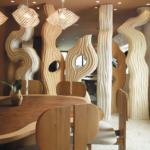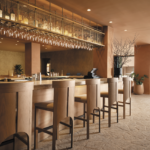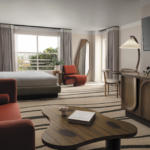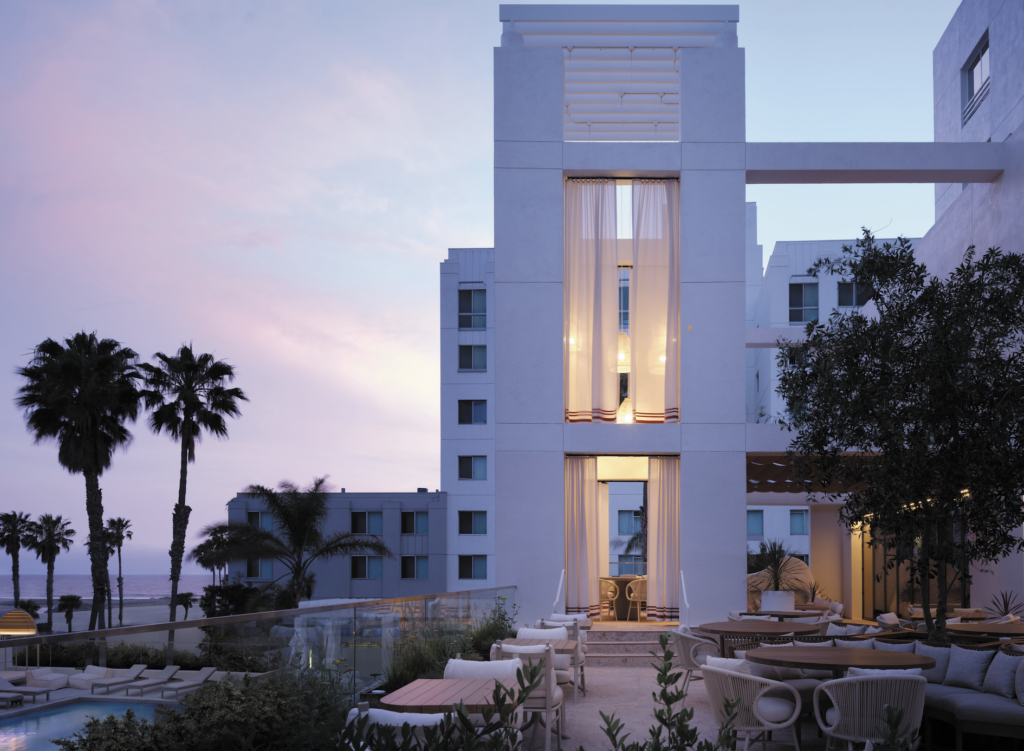Sea Change
Author:Abigail StoneMemories of beach-infused summers fuel architect Gulla Jónsdóttir’s reimagining of the Sandbourne Santa Monica
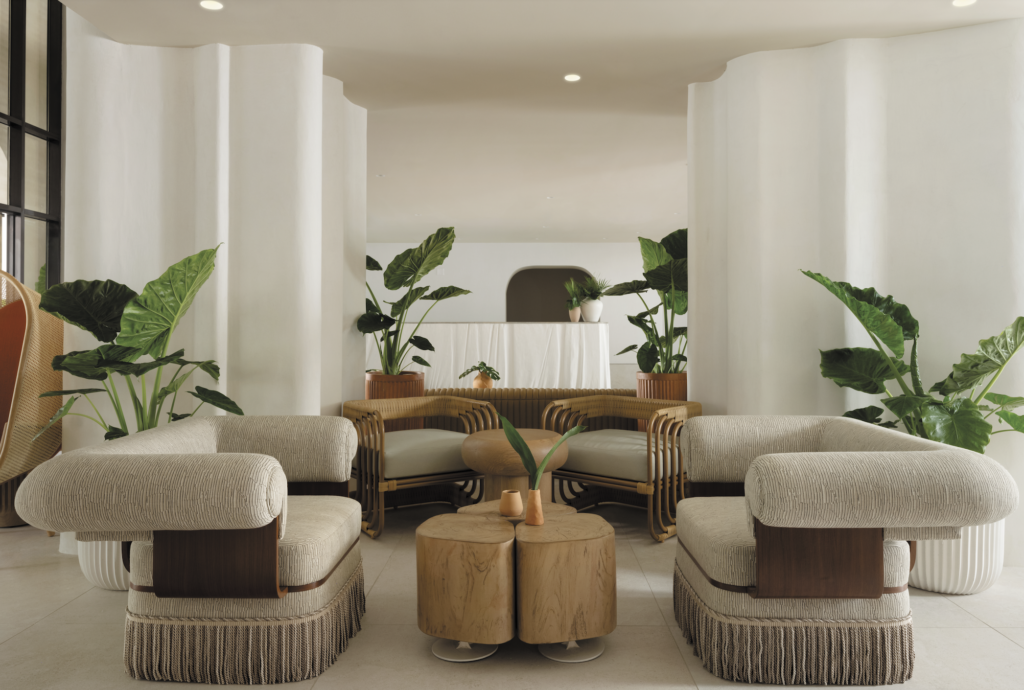
Growing up in Iceland, architect Gulla Jónsdóttir has many memories of summers spent cavorting on the beaches throughout Europe. “In most Mediterranean countries, such as France, Italy, Spain and Greece, they turn the smallest spot on the water—a bar, a café, a club—into a place that celebrates the beach,” she shares. Therefore, when she moved to California, she was understandably puzzled to discover that—despite its proximity to the ocean and its surf-and-sea reputation—L.A. offered few places that unified its social life with the water.
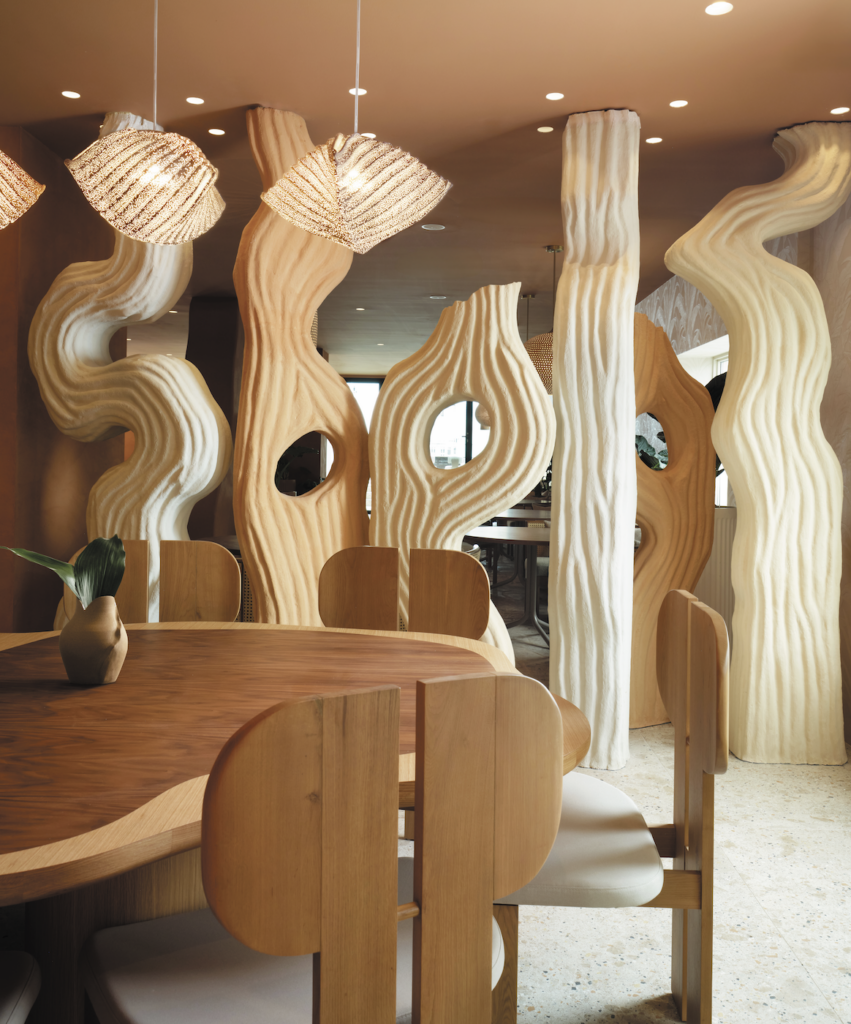
Photos by Stan Lee.
So when Stockdale Capital Partners, the real estate investment firm that had acquired JW Marriott’s Le Merigot Santa Monica, approached her about the design, she jumped at the opportunity to bring her version of those treasured memories to life. “This hotel is right on the beach,” she says. “So I thought, let’s recognize that. Let’s create this happy and fun and relaxing and cool place that is all about saluting its partnership with the ocean.”
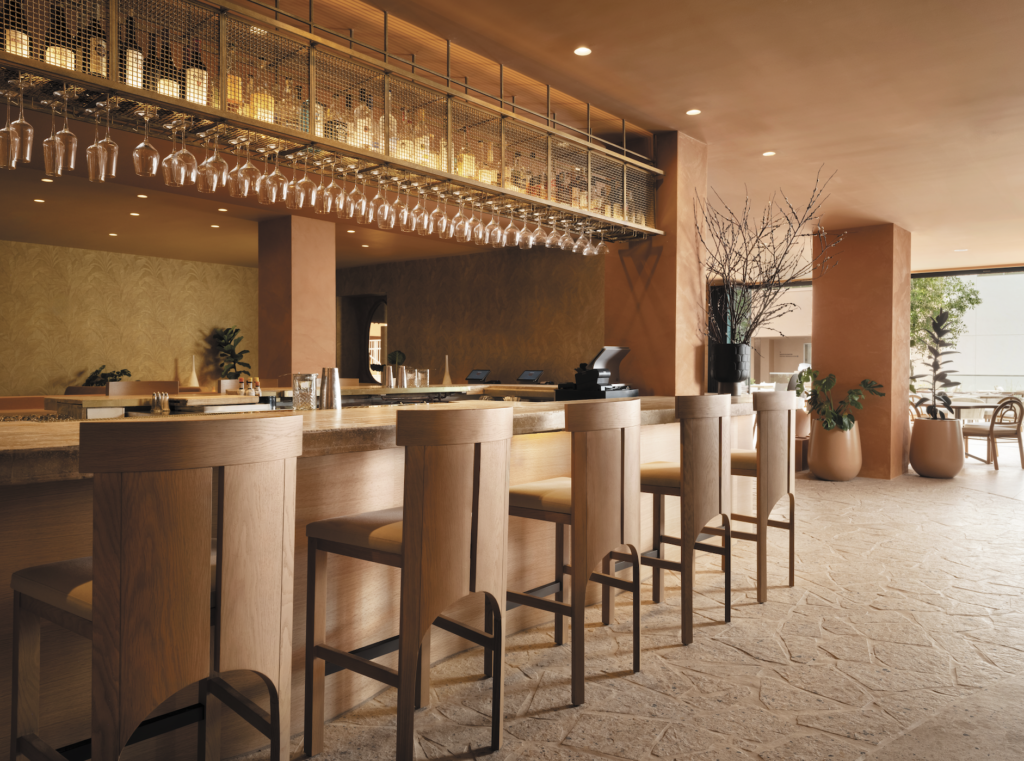
Rechristened the Sandbourne Santa Monica, the 175-room hideaway, part of Marriott’s Autograph Collection, a group of hotels hand-selected for their inherent craft and distinct perspectives on design and hospitality, now grabs every opportunity to celebrate its connection to the coastline. Jónsdóttir’s work, which includes hotel, restaurant and resort projects ranging from Comal at Chileno Bay, an Auberge resort in Los Cabos, to the Michelin two-star restaurant Le Grand in Paris, to Palmilla in Newport Beach and Esperanza in Manhattan Beach, has long pioneered an approach that reframes structures designed by women as havens rather than edifices. Partnering strength with sensuality, her designs—curvaceous, tactile and approachable—extend an invitation not just to enter but to linger. Here, she turned a dark, dreary and formal hospitality space into a shimmering and welcoming destination that echoes the promise of its location on an elegant palm-tree-lined stretch of Ocean Avenue.
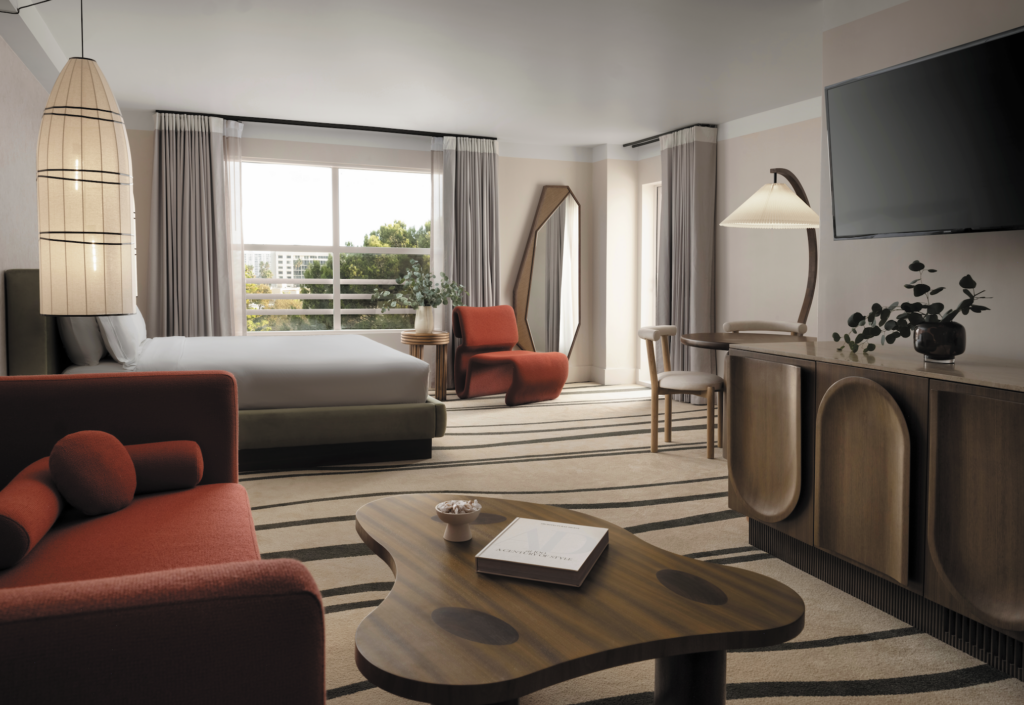
“The building had good bones,” Jónsdóttir notes. “So it was a matter of ripping things away and opening it up in order to showcase its beauty.” She washed the building in a warm oyster white that mirrors the nearby sand. She bulldozed a pony wall that separated the hotel from the water and replaced it with glass, exposing a shimmering view of Santa Monica’s iconic beach that can be glimpsed from the lobby, which now backdrops the inviting pool. She sculpted the foreboding columns that guarded the building’s front entry into voluptuous archways. She turned a disgruntled tower into the setting for Chef Raphael Lunetta’s Marelle and transformed an awkward walkway into its outdoor private dining area. “I like the challenge of finding something that’s unused and not pretty, even a little ugly, and making it into something wonderful,” says Jónsdóttir. With the restaurant’s walls warmed by a terra-cotta that echoes the inviting interior of a seashell, it’s the ideal setting for whiling away the afternoon enjoying the sunset and a cocktail. “I wanted to recreate that amazing feeling of a European beach vacation and pave the way for new, fresh, fun Santa Monica.”


